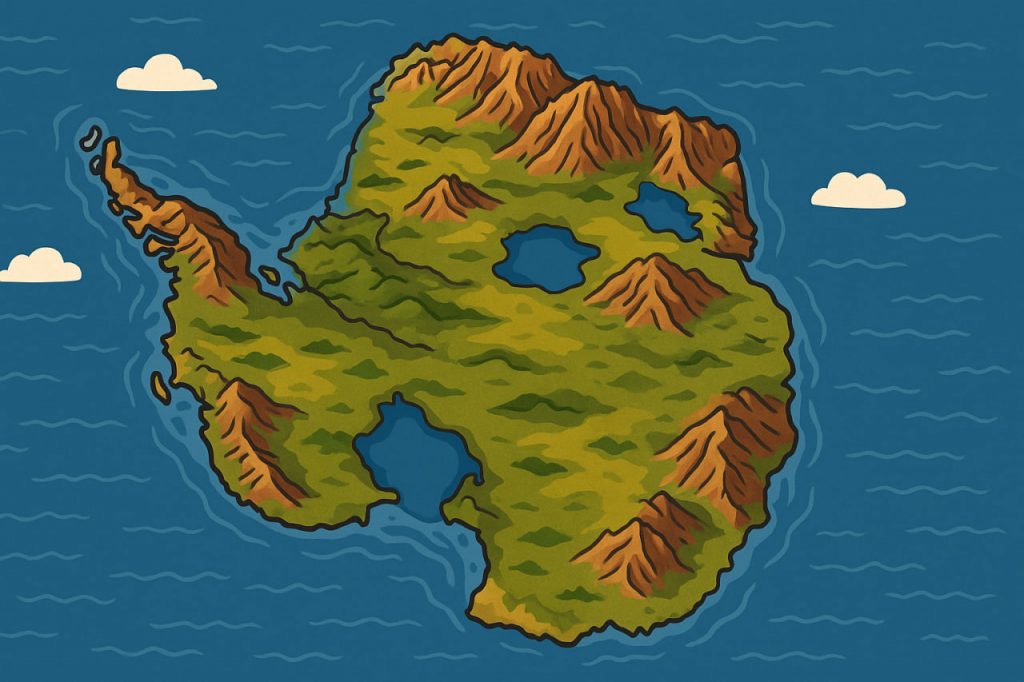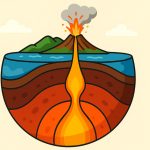Antarctica contains about 70% of the world’s fresh water, locked in its massive ice sheets. The ice is up to 4.8 km thick in some places. It reflects sunlight, regulates Earth’s climate, and influences ocean circulation. Without this ice, the planet’s balance would change dramatically.
Sea Level Rise
If all the Antarctic ice melted, global sea levels would rise by about 58 meters. This would flood major coastal cities like New York, London, Shanghai, and Tokyo. Entire countries and low-lying islands could disappear beneath the water.
Changes in Climate
The loss of Antarctica’s reflective ice surface, called the albedo effect, would cause Earth to absorb much more heat. This would accelerate global warming, altering weather systems worldwide. Deserts could expand, storms could intensify, and precipitation patterns would drastically shift.
Geological Landscape of Antarctica
Beneath the ice, Antarctica is not a flat landmass. It consists of mountain ranges, deep valleys, and hidden lakes. Without ice, much of the continent would lie below sea level, forming inland seas, while mountain chains would resemble other continental landscapes.
Impacts on Ecosystems
An ice-free Antarctica would drastically change ecosystems. Cold-adapted species such as penguins and seals would face extinction, while new species of plants and animals could colonize the continent. Ocean currents and nutrient flows would also be disrupted, affecting marine life globally.
Human Consequences
The flooding of populated areas would trigger massive climate migration, forcing billions of people to relocate. Food production and infrastructure would be challenged, while new land in Antarctica could become habitable and fertile — but at a catastrophic global cost.
Conclusion
An ice-free Antarctica would transform Earth beyond recognition. Rising seas, extreme climate shifts, and ecosystem collapses would reshape the future of civilization. Preserving the Antarctic ice is crucial for the stability of our planet.
Interesting Facts
If Antarctica were to lose all its ice, the transformation would be both dramatic and catastrophic for the planet. The continent’s ice sheet holds around 60–70% of Earth’s freshwater, and its complete melting would raise global sea levels by about 58 meters, submerging many of the world’s coastal cities. Beneath the ice lies a landscape of mountain ranges, valleys, and even ancient river systems, revealing that Antarctica was once covered in forests and supported diverse life millions of years ago. Without ice, the continent’s dark surface would absorb much more solar radiation, amplifying global warming through the albedo effect. The release of trapped methane and carbon dioxide from permafrost could further intensify climate change. Interestingly, new land areas could become habitable to some organisms, forming unique ecosystems similar to those in cold temperate zones. However, the loss of the ice sheet would also disrupt ocean currents, weather patterns, and the delicate balance of Earth’s climate system, reshaping life on the planet for millennia.
Glossary
- Albedo effect – the reflection of solar energy from bright surfaces like ice.
- Ice sheet – a massive glacier covering a continent.
- Sea level rise – increase in global ocean levels due to melting ice.
- Climate migration – movement of people forced by environmental changes.
- Ecosystem – community of living organisms and their environment.
- Inland sea – large body of water formed inside a continent.


